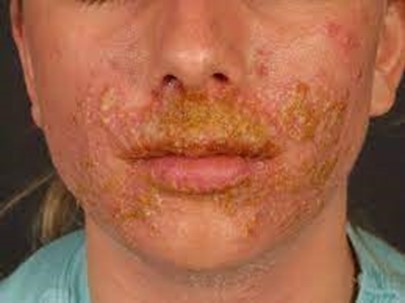A nurse is caring for a child who has Legg-Calve-Perthes disease and is in Buck extension traction.
Which of the following actions should the nurse take?
Reposition the child every 2 hr.
Remove the traction boot during baths.
Reduce fluid intake.
Apply antibiotic ointment to pin sites daily.
The Correct Answer is A
The correct answer is choice a. Reposition the child every 2 hr.
Choice A rationale:
Repositioning the child every 2 hours is essential to prevent complications such as pressure ulcers and to promote comfort and circulation.
Choice B rationale:
Removing the traction boot during baths is not recommended as it can disrupt the traction setup and potentially worsen the condition.
Choice C rationale:
Reducing fluid intake is not necessary for managing Legg-Calve-Perthes disease and could lead to dehydration.
Choice D rationale:
Applying antibiotic ointment to pin sites daily is not applicable in this scenario as Buck extension traction typically does not involve pin sites.
Nursing Test Bank
Naxlex Comprehensive Predictor Exams
Related Questions
Correct Answer is B
Explanation
This is an important measure to prevent the spreading of impetigo to others and to other parts of the body, as the bacteria can survive on clothing and other objects12.
Choice A.
Keeping the child on droplet precautions at home is incorrect, as impetigo is not spread by respiratory droplets, but by direct contact with the sores or contaminated items.
Choice C.
Immunizing household contacts for the disease is incorrect, as there is no vaccine for impetigo, which is caused by different types of bacteria.
Choice D.
Giving the child a chlorine bath twice daily is incorrect, as chlorine can irritate the skin and worsen impetigo.
The recommended treatment is to wash the sores with soap and water and
apply antibiotic ointment or cream23.
Therefore, choice B is the best answer to this question.

Correct Answer is A
Explanation
Choice A rationale: Yellow nasal discharge in a toddler with acute nephrotic syndrome signifies a potential upper respiratory tract infection, which is critically important. Children with nephrotic syndrome are highly susceptible to infections due to significant urinary loss of immunoglobulins, leading to an immunocompromised state. Furthermore, corticosteroid treatments, often prescribed for nephrotic syndrome, suppress the immune system. An infection can precipitate a relapse of the syndrome, lead to severe complications like peritonitis or sepsis, and requires prompt evaluation and potentially antibiotic therapy to prevent life-threatening outcomes.
Choice B rationale: Poor appetite is a non-specific symptom in toddlers with nephrotic syndrome and does not typically indicate an immediate, life-threatening complication. It can be attributed to generalized malaise, abdominal discomfort due to ascites, or even side effects of medications such as corticosteroids. While important to monitor for nutritional status and overall well-being, it does not carry the same urgency as signs of infection, which can rapidly lead to severe health deterioration in an immunocompromised child.
Choice C rationale: Facial edema is a cardinal clinical manifestation of acute nephrotic syndrome, resulting from profound hypoalbuminemia. Reduced plasma oncotic pressure causes fluid to shift from the intravascular space into the interstitial space, leading to generalized edema, often prominently in the face. This finding is expected and indicates the disease process itself, rather than an acute, unexpected complication requiring immediate reporting, unless there is a sudden, significant worsening or associated respiratory compromise.
Choice D rationale: Irritability in a toddler can be a manifestation of general discomfort, illness, or even a side effect of corticosteroid therapy, which can cause mood disturbances and behavioral changes. While it warrants assessment to identify the underlying cause, irritability is a non-specific symptom and does not directly indicate an urgent, life-threatening complication of nephrotic syndrome requiring immediate medical intervention, unlike the signs of an acute infection in an immunocompromised child.
Whether you are a student looking to ace your exams or a practicing nurse seeking to enhance your expertise , our nursing education contents will empower you with the confidence and competence to make a difference in the lives of patients and become a respected leader in the healthcare field.
Visit Naxlex, invest in your future and unlock endless possibilities with our unparalleled nursing education contents today
Report Wrong Answer on the Current Question
Do you disagree with the answer? If yes, what is your expected answer? Explain.
Kindly be descriptive with the issue you are facing.
